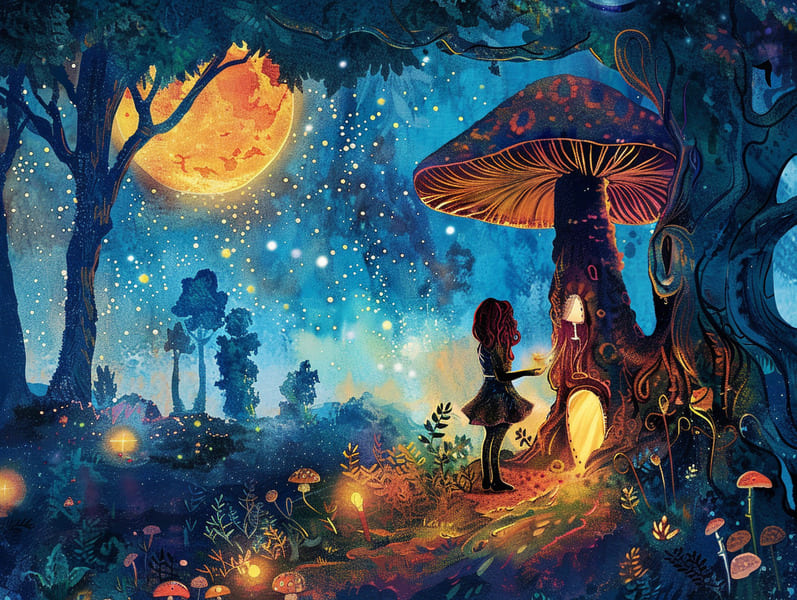The Beginning of Old Fairy Tales and Its Everlasting Wonder.
The Beginning of Old Fairy Tales and Its Everlasting Wonder.
Blog Article

Best fairy tales have deep roots. These stories have been recounted from one generation to the next long before they were ever documented. They originated from a variety of cultures, including African traditions. They were initially transmitted among adults, often carrying themes and messages pertaining to the societal norms and beliefs of the time.
The Brothers Grimm, Jacob and Wilhelm Grimm, were among the first to compile and publish many of these beloved stories. Their volume, "Grimm's Fables," included tales like "Cinderella," "Hansel and Gretel," and "Snow White," which have since become pillars in the world of famous fairy tales. Similarly, the Danish author's magical fairy tales, such as "The Mermaid," and "The Duckling that Could," have gained the love worldwide, cementing their place in the pantheon of treasured fairy tales.
Despite being ancient, these tales remain as significant as ever, especially as children's bedtime stories. These magical stories are now available in many formats, including colorful picture books, charming animations, and web-based fairy tales.
Their lasting appeal can be ascribed to several charming aspects:
Valuable Lessons: Ancient fairy tales often convey important moral lessons. Narratives like "The Shepherd Boy and the Wolf" teach the significance of sincerity, while "The Race of the Tortoise and the Hare" demonstrate the values of perseverance and unpretentiousness. These narratives offer kids clear distinctions between virtue and vice, guiding their moral compass in a soft yet impactful way.
Sympathy and Perception: Fairy tales frequently depict personalities facing obstacles and hardships, fostering readers to connect with their struggles and celebrate their triumphs. For instance, "Beauty's Beast" shows us the virtue of seeing beyond the surface to comprehend the true essence of a individual, cultivating kindness and comprehension.
Cultural Perception: Many classic fairy tales are imbued with the cultural contexts from which they developed. Delving into these fairy tales can provide informative snapshots into different societies, enhancing a sense of global understanding and perception.
Creativity and Fantasy: The fanciful elements in fairy tales—magical spells—revitalize children’s visions and dreams. These stories take readers to imaginary realms, triggering inventive thinking and a sense of magic that stays a lifetime.
Timeless fairy tales are not only whimsical but also pedagogical. They provide alluring tools in strengthening various intellectual and emotional capacities in the young. When traditional fairy tales are voiced, they improve language proficiency by bringing new language and elaborate sentence structures. This practice also strengthens hearing perception and attentiveness, as young ones focus on every detail, ready to see what happens next.
Furthermore, deliberating the themes and characters of fairy tales can strengthen logical thinking and thinking skills. The young learn to spot patterns, predict happenings, and catch on to cause and effect. These reflections also aid children articulate their thoughts and feelings, promoting their emotional intelligence.
In today’s technological era, the presence of internet fairy tales has made these narratives more accessible than ever. Internet resources and software offer vast collections of timeless fairy tales that can be looked at or played anytime, anywhere. Fairy tales read aloud are particularly well-liked, giving an delightful method for young ones to enjoy these bewitching tales. Read-aloud books and read-to-me stories move characters and settings to life, often supported by whimsical audio effects and melodies that enrich the tale experience.
The unending appeal of traditional fairy tales lies in their ability to adapt to new eras while preserving their core values. Contemporary modernizations of these narratives often show more representative protagonists and modern settings, making them relevant to today’s audience. However, the key lessons of daring, generosity, and impartiality remain unchanged, continuing to reach readers of all ages.
Old fairy tales also offer a sense of solace and closeness. They allow a neat narrative with a apparent beginning, middle, and end, often concluding with the ending of conflicts and the triumph of truth over falsehood. This assuredness can be reassuring for young ones, affording a sense of steadfastness in an ever-changing world.
Traditional fairy tales continue to spellbind and coach new generations, maintaining their charm and importance in modern society. As children's bedtime stories, they feature a perfect blend of wonder and wisdom, encouraging moral values, empathy, and creativity. The existence of internet fairy tales and the in demand status of fairy tales spoken validate that these traditional narratives remain obtainable to new generations.
By safeguarding and conveying these narratives, we continue to admire the rich tapestry of human imagination and cultural heritage. Whether you are enjoying a vibrantly illustrated book, browsing a cyber library, or listening to an sound book, the fascination of Grimm's fairy tales is always within reach. These stories show us of the invariable power of storytelling and its ability to bring us together across epochs and places.
No matter if you are viewing a vibrantly these guys illustrated book, discovering a internet collection, or listening via an read-aloud book, the beauty of famous fairy tales is always within reach.
These narratives emphasize of the continued influence of tales and its ability to join us across epochs and places, casting a charm that fascinates and enlightens alike.